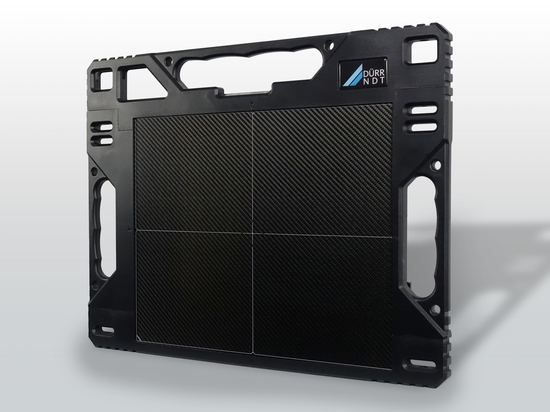
#Industry News
The Mariners’ Museum and Park Explores Maritime History Using Digital X-ray Imaging from DÜRR NDT
The Mariners’ Museum and Park in Newport News, VA, USA, is home to the Batten Conservation Complex and the USS Monitor Center.
Within the Batten Conservation Complex, conservators specializing in archival documents, paper, objects, and archaeological materials work alongside a research scientist to stabilize and preserve the collection for generations to come. Researchers across the team continue to build the body of knowledge gleaned from the collection, uncovering the full stories that include the contributions of all cultures to our shared maritime heritage.
As part of this important conservation and research effort, The Mariners’ Museum recently acquired a DÜRR NDT HD-CR 35 Computed Radiography system and D-Tect X software to replace much of their existing radiography capability, improving efficiency and flexibility. The HD-CR 35 is the most flexible and advanced CR scanner on the market today, with the ability to provide the highest resolution images in the industry. In addition, because of its unique TreFoc technology, which offers an adjustable laser spot size, it can also provide high-contrast images when necessary.
As an example of how digital imaging helps the analysis of artifacts, this copper-alloy pocket compass from a dispatch box made in 1872 was X-rayed at a single energy. The imaging plate (IP) was then scanned into the DÜRR NDT D-Tect X software. Using the powerful image adjustment tools built into the software, it was possible to focus on different density areas of an object without using multiple exposures, as would typically be necessary with film radiography.
Also interesting, an X-ray image of a leather shoe sole retrieved from Princess Carolina, a derelict ship used as fill during land expansion in Manhattan in the mid-18th century. Although the vessel is earlier, representing the oldest-known European-style ship constructed in North America, the fill material – like this shoe – dates to the end of the vessel’s life in the mid-18th century. This object is of interest for two reasons: firstly, because it showcases the ability of the HD-CR 35 to image thin organic objects as well as those made of more dense materials such as metal, and secondly, because this X-ray image clearly shows the initials scratched into the leather; these were not readily visible when the sole was examined visually. The image processing filters in the D-Tect X software greatly enhance the contrast of the image to make these details stand out and facilitate the examination and analysis of such valuable artifacts.
A model boat, built by a prisoner-of-war circa 1801, has a wooden structure with bone overlays and detailing made of bone, baleen, iron, and other materials. Many of these materials would have been salvaged from food remains, and models of this type were often built to sell, allowing the maker to supplement their meager rations. Digital X-ray imaging confirmed a suspected internal spring mechanism that originally allowed the cannon to be deployed or retracted, imitating the firing of a broadside and running out the guns. The mechanism has not been activated recently for fear of damage, but the X-ray images will be used to further evaluate its condition and also to locate missing cannon that may have fallen inside the model.
Another ongoing project at The Mariners’ Museum and Park is the detailed conservation, analysis, and documentation of USS Monitor, the first iron warship in the US Navy and the first warship in the world commissioned with a rotating gun turret. The vessel sank off Cape Hatteras, NC, USA, in 1862. Its wreck was discovered in 1973, and the turret was recovered in 2002. All materials recovered are undergoing conservation at the Museum, representing the world’s largest marine archaeological metals conservation project.
Many objects from USS Monitor and other vessels have been X-rayed and studied at The Mariners’. Will Hoffman, director of Conservation, and the Conservation team routinely use the HD CR-35 and D-Tect X software to provide detailed information about artifacts, revealing valuable insights into maritime history. Each conservator is trained to use the equipment and can study their own material specialty. Following the imaging of the prisoner-of-war model above, Senior Objects Conservator Erik Farrell commented, “We are incredibly happy with the image quality we are getting from the HD-CR 35. This new system is helping us learn more about the construction and condition of a wide range of objects and has also vastly simplified our imaging process.”
The Mariners’ Museum and Park connects people to the world’s waters because through the water – through our shared maritime heritage - we are connected to one another. Founded in 1930, the organization is an educational, non-profit institution accredited by the American Alliance of Museums, preserving and interpreting maritime history through its collection of ship models, paintings, and other artifacts. The 550-acre Mariners’ Museum Park surrounds the Mariners’ Museum, the largest privately maintained park open to the public in North America. The Mariners’ Museum Library is the largest maritime library in the Western hemisphere. Because of the Museum’s world-class collection and its reputation for high-level exhibits and programs, in 1999, the U.S. Congress designated The Mariners’ Museum as one of only two maritime museums that comprise America’s National Maritime Museum.









